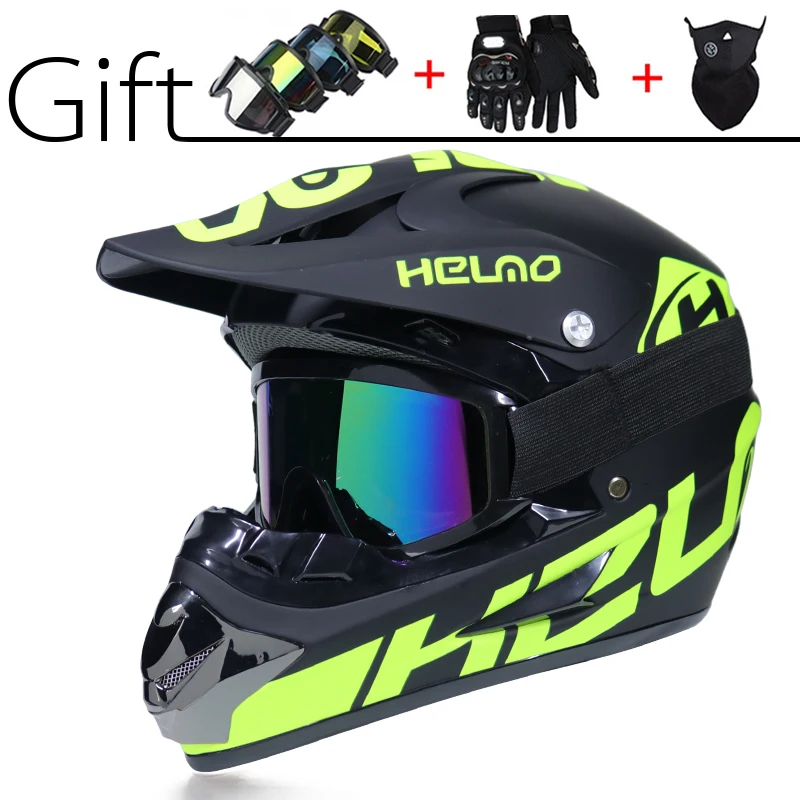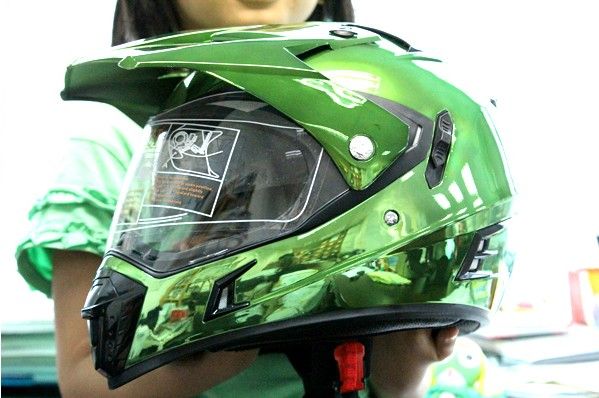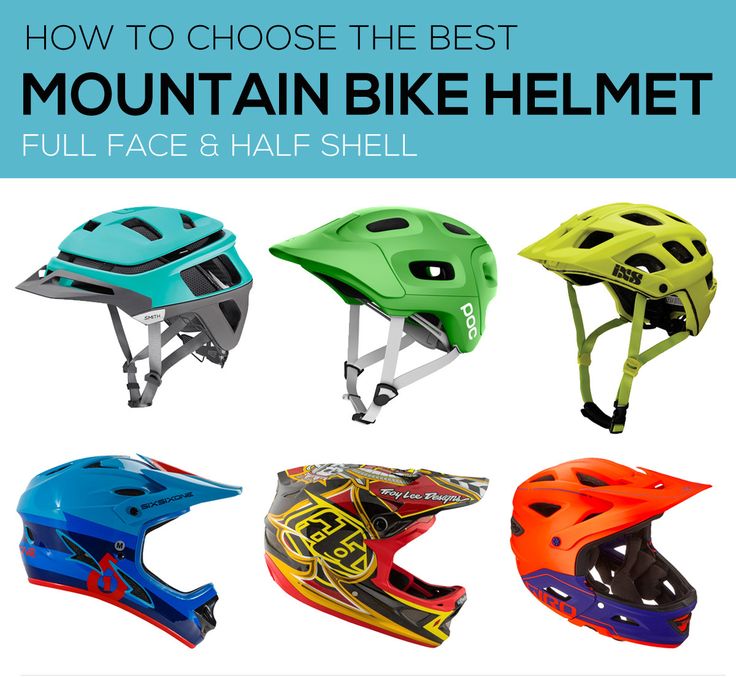Select a country
Afghanistan
Albania
Algeria
Andorra
Angola
Anguilla
Antarctica
Antigua and Barbuda
Argentina
Armenia
Aruba
Australia
Austria
Azerbaijan
show more
Bahamas
Bahrain
Bangladesh
Barbados
Belarus
Belgium
Belize
Benin
Bermuda
Bhutan
Bolivia
Bosnia and Herzegowina
Botswana
Bouvet Island
Brazil
British Indian Ocean Territory
British Virgin Islands
Brunei Darussalam
Bulgaria
Burkina Faso
Burundi
show more
Cambodia
Cameroon
Canada
Cape Verde
Cayman Islands
Central African Republic
Chad
Chile
China
Christmas Island
Cocos Islands
Colombia
Comoros
Congo
Cook Islands
Costa Rica
Cote D'ivoire
Croatia
Cuba
Cyprus
Czechia
show more
Denmark
Djibouti
Dominica
Dominican Republic
East Timor
Ecuador
Egypt
El Salvador
Equatorial Guinea
Eritrea
Estonia
Ethiopia
show more
Faeroe Islands
Falkland Islands
Fiji
Finland
France
French Antarctic
French Guiana
French Polynesia
show more
Gabon
Gambia
Georgia
Germany
Ghana
Gibraltar
Greece
Greenland
Grenada
Guadeloupe
Guatemala
Guinea
Guinea-bissau
Guyana
show more
Haiti
Heard and McDonald Islands
Honduras
Hong Kong
Hungary
Iceland
India
Indonesia
Iran
Iraq
Ireland
Israel
Italy
show more
Jamaica
Japan
Jordan
Kazakhstan
Kenya
Kiribati
Korea (North)
Korea (South)
Kuwait
Kyrgyzstan
show more
Laos
Latvia
Lebanon
Lesotho
Liberia
Libya
Liechtenstein
Lithuania
Luxembourg
show more
Macau
Macedonia
Madagascar
Malawi
Malaysia
Maldives
Mali
Malta
Marshall Islands
Martinique
Mauritania
Mauritius
Mayotte
Mexico
Micronesia
Moldova
Monaco
Mongolia
Montenegro
Montserrat
Morocco
Mozambique
Myanmar
show more
Namibia
Nauru
Nepal
Netherlands
Netherlands Antilles
New Caledonia
New Zealand
Nicaragua
Niger
Nigeria
Niue
Norfolk Island
Norway
show more
Pakistan
Palau
Palestine
Panama
Papua New Guinea
Paraguay
Peru
Philippines
Pitcairn Islands
Poland
Portugal
Puerto Rico
show more
Reunion
Romania
Russia
Rwanda
Saint Helena
Saint Kitts and Nevis
Saint Lucia
Saint Vincent and the Grenadines
Saint-Pierre and Miquelon
Samoa
San Marino
Saudi Arabia
Senegal
Serbia
Seychelles
Sierra Leone
Singapore
Slovakia
Slovenia
Solomon Islands
Somalia
South African Republic
South Georgia and the South Sandwich Islands
Spain
Sri Lanka
Sudan
Suriname
Svalbard and Jan Mayen Islands
Swaziland
Sweden
Switzerland
Syria
show more
Taiwan
Tajikistan
Tanzania
Thailand
Togo
Tokelau
Tonga
Trinidad and Tobago
Tunisia
Turkey
Turkmenistan
Turks Caicos Islands
Tuvalu
show more
U. S. Virgin Islands
United States
Uganda
Ukraine
United Arab Emirates
United Kingdom
Uruguay
Uzbekistan
show more
Vanuatu
Vatican City
Venezuela
Viet Nam
Wallis and Futuna Islands
Western Sahara
Zaire
Zambia
Zimbabwe
{{#DETAIL_PAGE_URL}} {{SECTION_NAME}} {{NAME}} {{/DETAIL_PAGE_URL}}
Color: {{COLOR}}
{{#IS_SIZE}} Size: {{{SIZE}}} {{/IS_SIZE}}
Quantity:
Only {{AVAILABLE_QUANTITY}} left
{{#SHOW_DISCOUNT_PRICE}}
{{{SUM_FULL_PRICE_FORMATED}}}
{{/SHOW_DISCOUNT_PRICE}}
{{{SUM_PRICE_FORMATED}}}
{{/GIFT}} {{#GIFT}}
{{/GIFT}} {{/EMPTY_BASKET}} {{#EMPTY_BASKET}}
Your basket is empty
{{/EMPTY_BASKET}}
{{^FREE_SHIPPING}}
{{{FREE_SHIPPING_PERCENT}}}%
{{/FREE_SHIPPING}}
{{{FREE_SHIPPING_PRICE}}}
 Online shop.
Online shop.Select a country
Afghanistan
Albania
Algeria
Andorra
Angola
Anguilla
Antarctica
Antigua and Barbuda
Argentina
Armenia
Aruba
Australia
Austria
Azerbaijan
show more
Bahamas
Bahrain
Bangladesh
Barbados
Belarus
Belgium
Belize
Benin
Bermuda
Bhutan
Bolivia
Bosnia and Herzegowina
Botswana
Bouvet Island
Brazil
British Indian Ocean Territory
British Virgin Islands
Brunei Darussalam
Bulgaria
Burkina Faso
Burundi
show more
Cambodia
Cameroon
Canada
Cape Verde
Cayman Islands
Central African Republic
Chad
Chile
China
Christmas Island
Cocos Islands
Colombia
Comoros
Congo
Cook Islands
Costa Rica
Cote D'ivoire
Croatia
Cuba
Cyprus
Czechia
show more
Denmark
Djibouti
Dominica
Dominican Republic
East Timor
Ecuador
Egypt
El Salvador
Equatorial Guinea
Eritrea
Estonia
Ethiopia
show more
Faeroe Islands
Falkland Islands
Fiji
Finland
France
French Antarctic
French Guiana
French Polynesia
show more
Gabon
Gambia
Georgia
Germany
Ghana
Gibraltar
Greece
Greenland
Grenada
Guadeloupe
Guatemala
Guinea
Guinea-bissau
Guyana
show more
Haiti
Heard and McDonald Islands
Honduras
Hong Kong
Hungary
Iceland
India
Indonesia
Iran
Iraq
Ireland
Israel
Italy
show more
Jamaica
Japan
Jordan
Kazakhstan
Kenya
Kiribati
Korea (North)
Korea (South)
Kuwait
Kyrgyzstan
show more
Laos
Latvia
Lebanon
Lesotho
Liberia
Libya
Liechtenstein
Lithuania
Luxembourg
show more
Macau
Macedonia
Madagascar
Malawi
Malaysia
Maldives
Mali
Malta
Marshall Islands
Martinique
Mauritania
Mauritius
Mayotte
Mexico
Micronesia
Moldova
Monaco
Mongolia
Montenegro
Montserrat
Morocco
Mozambique
Myanmar
show more
Namibia
Nauru
Nepal
Netherlands
Netherlands Antilles
New Caledonia
New Zealand
Nicaragua
Niger
Nigeria
Niue
Norfolk Island
Norway
show more
Pakistan
Palau
Palestine
Panama
Papua New Guinea
Paraguay
Peru
Philippines
Pitcairn Islands
Poland
Portugal
Puerto Rico
show more
Reunion
Romania
Russia
Rwanda
Saint Helena
Saint Kitts and Nevis
Saint Lucia
Saint Vincent and the Grenadines
Saint-Pierre and Miquelon
Samoa
San Marino
Saudi Arabia
Senegal
Serbia
Seychelles
Sierra Leone
Singapore
Slovakia
Slovenia
Solomon Islands
Somalia
South African Republic
South Georgia and the South Sandwich Islands
Spain
Sri Lanka
Sudan
Suriname
Svalbard and Jan Mayen Islands
Swaziland
Sweden
Switzerland
Syria
show more
Taiwan
Tajikistan
Tanzania
Thailand
Togo
Tokelau
Tonga
Trinidad and Tobago
Tunisia
Turkey
Turkmenistan
Turks Caicos Islands
Tuvalu
show more
U. S. Virgin Islands
S. Virgin Islands
United States
Uganda
Ukraine
United Arab Emirates
United Kingdom
Uruguay
Uzbekistan
show more
Vanuatu
Vatican City
Venezuela
Viet Nam
Wallis and Futuna Islands
Western Sahara
Zaire
Zambia
Zimbabwe
{{#DETAIL_PAGE_URL}} {{SECTION_NAME}} {{NAME}} {{/DETAIL_PAGE_URL}}
Color: {{COLOR}}
{{#IS_SIZE}} Size: {{{SIZE}}} {{/IS_SIZE}}
Quantity:
Only {{AVAILABLE_QUANTITY}} left
{{#SHOW_DISCOUNT_PRICE}}
{{{SUM_FULL_PRICE_FORMATED}}}
{{/SHOW_DISCOUNT_PRICE}}
{{{SUM_PRICE_FORMATED}}}
{{/GIFT}} {{#GIFT}}
{{/GIFT}} {{/EMPTY_BASKET}} {{#EMPTY_BASKET}}
Your basket is empty
{{/EMPTY_BASKET}}
{{^FREE_SHIPPING}}
{{{FREE_SHIPPING_PERCENT}}}%
{{/FREE_SHIPPING}}
{{{FREE_SHIPPING_PRICE}}}
Articles
30 Apr
Even if you are a beginner, or just always ride carefully - a helmet should be on your head when you are driving an ATV. And because traffic rules require it, and because even at low speed, a fall without protection can result in injury. Add branches here that you can catch on in the forest.
And because traffic rules require it, and because even at low speed, a fall without protection can result in injury. Add branches here that you can catch on in the forest.
Since there are dozens of helmets in any store now, it can be difficult to choose.
All models are divided into 4 types according to their design: open, modular, integral and cross.
Open helmets only protect the head, plus may have glass. They don't protect their faces. These are suitable for leisurely walks at low speed.
Modulars are good in that the lower (chin) part and the visor move up. Initially, this was invented for smokers - so that at bus stops you do not have to remove your helmet for a smoke break. But as it turned out, it is also convenient for others: to drink water, explore the surroundings, and have a bite to eat. This helmet is ideal for a relaxed ride.
integrals are the most secure. Structurally, it is a closed round helmet (sometimes with a small visor) with a chin bar that does not move up. The visor, depending on the model, may or may not rise. The main disadvantage: to chat, look around or drink water at the bus stop, the helmet will have to be removed.
Structurally, it is a closed round helmet (sometimes with a small visor) with a chin bar that does not move up. The visor, depending on the model, may or may not rise. The main disadvantage: to chat, look around or drink water at the bus stop, the helmet will have to be removed.
Cross-country helmets are considered sport helmets. They weigh less, have a more aggressive design: a far protruding visor, the chin bar does not rise, and also protrudes forward. There is usually no visor: instead, goggles must be worn to the helmet (but there are also models with glass). According to many riders, it is easier to breathe in such helmets than in integrals, since there is more room for exhalation.
The choice between a cross-country helmet or a full face helmet depends on the rider's preference. If you prefer to have more mobility, and ride actively and quickly, take cross-country. If you want to be as protected as possible - take the integral. And even better - try on both this and this option, and choose according to your feelings.

CFMOTO V520 open face helmet. Budget lightweight option with a visor and wide and high glass. Suitable for beginners and for tourists who will not push the gas to full, and will not climb into an impenetrable thicket (since there is no protection for the neck and chin - branches can scratch them).
FXR Clutch Cross Helmet. Highly ventilated, lightweight polymer helmet with removable anti-bacterial lining, rear diffuser (to protect your neck) and extended rubber insert (to protect against frost and snow if you plan to ride in winter).
Highly ventilated, lightweight polymer helmet with removable anti-bacterial lining, rear diffuser (to protect your neck) and extended rubber insert (to protect against frost and snow if you plan to ride in winter).
509 Tactical cross helmet. With a durable polycarbonate shell, two layers of EPS of different densities and thoughtful ventilation.
ProBiker Riding Tribe Integral A simple budget helmet with a removable hypoallergenic lining, vents on different sides, quick release and safety.
509 Delta R3 Carbon is a cross/integral hybrid. Premium model with carbon shell, protruding visor and glass.
You can get injured even at low speed and without falling - from a bouncing branch or stone, a torn tow rope or an insect that has hit your face. Restoring health at the same time is more expensive and longer than an ATV. Therefore, a helmet is required. From what materials and what form is safer - we will tell in the article.
Therefore, a helmet is required. From what materials and what form is safer - we will tell in the article.
Helmets differ in shape, weight, material and the presence of a visor (protective glass). The division into "male" / "female" or "children's" / "adults" is conditional, they differ only in colors and size.
Lightweight, does not restrict visibility and is well ventilated. Do not interfere with drinking, eating and talking. Protect from branches, stones and a fine when meeting with a traffic police inspector. Due to the open lower part of the face, there is a high risk of jaw injury during falls and collisions. Therefore, such helmets are not suitable for an ATV.
Open helmets include helmet, three-quarter, half and jet.
Heavier and more expensive than open helmets, but completely cover the head. In addition to injuries, they can partially or completely protect against wind, noise, cold and dust.
Int. It is the safest helmet available due to its integral construction. It is also the best in terms of noise isolation and aerodynamics, but this is irrelevant for an ATV. Of the minuses - it is stuffy to ride in it through the forest. Visibility is worse than in a cross helmet. No visor.
Cross . A kind of integral with a visor for protection from branches, sun and drizzling rain. It has an extended forum for easier breathing and reinforced chin protection. As a rule, such helmets are not equipped with a visor. Goggles are worn instead - they provide good viewing angles and ventilation. An example of a cross helmet is 509 TACTICAL.
Modular ( transformer, flip-up ). Similar to the integral, but has a lifting jaw arch. Due to this, the rider can drink, eat and communicate in a helmet. At the same time, due to the complex design, the modular is heavier and more expensive than other helmets. There may be ventilation problems and whistling when driving. The safety of the modular is the lowest among closed helmets - the arc sometimes flies out on impact. An example of a modular helmet - 509Delta R4.
There may be ventilation problems and whistling when driving. The safety of the modular is the lowest among closed helmets - the arc sometimes flies out on impact. An example of a modular helmet - 509Delta R4.
Integral
CROSSOS
MODULAR
HELEMS.
Outer sheath can be made of thermoplastics or composites. Polycarbonate (plastic) helmets are heavier and more massive than composite ones, less durable, but cheaper. The most unreliable are made of ABS plastic. High-quality plastic is elastic, but bursts under extreme loads.
Composite helmets are made from fiberglass, aramid, fiberglass, carbon fiber, fiberglass, carbon fiber, carbon, kevlar, and similar materials that are bonded with resin, compressed, and baked. The strongest have at least three layers with different characteristics of penetration, compression / stretching and stiffness. Rinse, preventing penetrating damage. They are lighter and more reliable than plastic ones, but they are more expensive. The outer shell evenly distributes the impact energy during a crash and transfers it to the soft inner layer.
Rinse, preventing penetrating damage. They are lighter and more reliable than plastic ones, but they are more expensive. The outer shell evenly distributes the impact energy during a crash and transfers it to the soft inner layer.
The inner shell consists of multilayer EPS (polystyrene foam) of different density and thickness. It is a versatile, lightweight material that dampens impact energy, and over time, for convenience, takes the form of a head.
Foam seals and fabric part are added to the inner shell. In high-quality helmets, it is removable - you can wash or replace it.
The replacement part of the helmet is made from hypoallergenic fabrics. It creates additional comfort, warms in the cold and removes moisture in the heat. Synthetic is lighter and less demanding to care for, but can irritate the skin. Natural is more comfortable, but heavier, more difficult to care for and less hygienic.
The visor is made of polycarbonate. It can be transparent, tinted or colored. There are visors with double glasses and protection against scratches. They can also be coated with films and special compositions: anti-fog, anti-reflective and anti-fogging from the inside.
It can be transparent, tinted or colored. There are visors with double glasses and protection against scratches. They can also be coated with films and special compositions: anti-fog, anti-reflective and anti-fogging from the inside.
The visor can be heated (anti-fogging and anti-icing) as standard or purchased separately. He receives power through the wire from the ATV, which is not always convenient for extreme driving.
Travel . A cross-country helmet is suitable for summer and spring - it is better ventilated and protects from the sun. For autumn and winter, it is better to choose an integral with built-in visor heating and an exhaled air removal system. Modular can be worn for a short walk, but on a long journey, due to its greater weight, it is less comfortable than other helmets.
Track riding and tricks . The best choice is a cross helmet made of composite materials. In addition to injuries, it will protect against overloads, in which it is easy to overstrain or damage the muscles of the neck in a heavy helmet.
In addition to injuries, it will protect against overloads, in which it is easy to overstrain or damage the muscles of the neck in a heavy helmet.
Household work . A cross-country helmet or integral without a visor, with good ventilation, will do.
Fit . The helmet should evenly fit the head, do not press, do not rub. A spacious helmet that dangles from the head increases the risk of injury. Therefore, you do not need to use someone else's and buy a child "for growth."
To test the fit of the helmet, use both hands to twist it side to side, resisting with your head and neck. The helmet must not rotate. Shake and turn your head. It is important that the helmet does not interfere with visibility and does not narrow the field of peripheral vision. If you wear glasses, try on a helmet with them.
Life hack for men with a narrow face - if all the helmets hang on you, pay attention to the so-called "female" models, they are often narrower. The opposite is true for women with wide cheekbones - take a closer look at the "male" models.
The opposite is true for women with wide cheekbones - take a closer look at the "male" models.
Weight . The more weight, the faster the neck and head get tired. For short walks, the extra 100 grams is not important, but it is better to overpay for them when choosing a helmet for travel and extreme riding.
Certification The helmet must be certified to world standards. Therefore, if the standard is unknown to you, ask the seller about it and double-check the information on the Internet.

Certification mark location example , ACU (Great Britain).
Expiration date and date of manufacture. These are quality markers because they are affixed, as a rule, only serious brands. The helmet cannot be used longer than the expiration date - by this time the materials lose their original protective properties.
The vents and breather are important passive protection against fogging and overheating.
Fasteners. There are different shapes, but D-rings (D-shaped fasteners-rings) are considered the most reliable, and the quick-release fastener with a “ratchet” is considered the most convenient.
The visor lift mechanism is one of the most vulnerable parts of the helmet. Should be comfortable to operate without jamming.